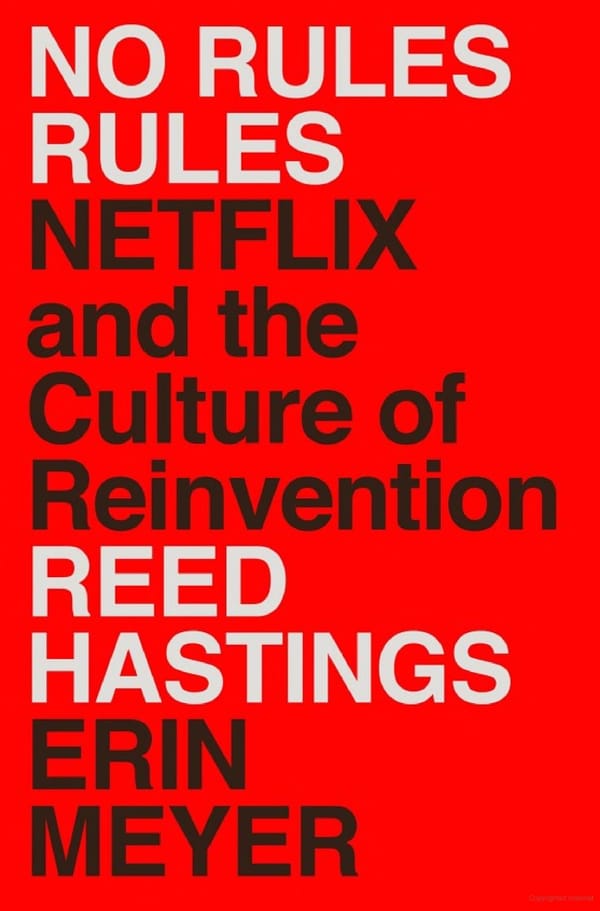Book Review: Turn This Ship Around
David Marquet shares his lessons from transformational leadership aboard a nuclear submarine.

It didn’t matter how smart my plan was if the team couldn’t execute it!
If you were ever curious what leadership lessons you could learn from running a nuclear submarine, look no further! David Marquet’s Turn This Ship Around gives you exactly what you didn’t know you’ve been missing.
Marquet was the captain of the nuclear submarine USS Sante Fe and took his unique leadership style to greatly improve the performance of one of the worst submarines in the fleet. Metrics such as re-enlistment rate to promotion rate skyrocketed under his leadership.
The book is about the lessons he learned. The premise is that previously the general naval command structure was very hierarchical and you listened closely to the chain of command, without questioning orders. There are good reasons for this historical structure–you want to tolerate dissent conditionally and certainly not in the heat of battle. That said, the level of coordination needed to do complex maneuvers on a nuclear submarine meant that the pendulum had perhaps swung too far, requiring captains to perform heroic feats of micromanagement to get the ship to perform.
Succinctly, his approach: make better use of the brains of everyone on board.
In practice, this means a focus on empowerment. Captains and leaders must “give up control yet maintain responsibility.” It requires trust in the team. And there are ways to do this incorrectly, where the book details his methods for working through challenges. Per Marquet:
As the level of control is divested, it becomes more and more important that the team be aligned with the goal of the organization.
Another is growing the bench. Some may naively think that if a ship's performance suffers after a leader leaves, that was a sign of a strong leader–only they could’ve kept things running. Marquet argues the opposite is true. This is a sign of stifling leadership that there was no bench ready to step up. Instead he councils in dealing with your team:
Resist the urge to provide solutions.
The next framework that resonated with me is the idea: is your team aiming for excellence or mistake avoidance? Aiming for excellence is about the final product and a willingness to learn for the sake of the mission. Mistake avoidance is about looking perfect every time, lowering risk tolerance and openness to feedback. Marquet observes:
Subordinates generally desire to present the boss with a “perfect” product the first time. Unfortunately, this gets in the way of efficiency because significant effort can be wasted.
Later, once the crew had adopted the new philosophy of achieving operational excellence rather than avoiding errors, I would back out of the process.
You cannot overhaul your organization without an emphasis on the norms of communication. The way information is shared is changing from top-down to distributed. That means moving away from the previous default mode of communication to sharing plans, thoughts, and vocalizing intent. In a way, this unlocks the potential of the hive mind of the submarine. It also serves as an error correction mechanism.
A key feature of naval life is inspections, which could be seen as adversarial evaluations. Marquet argues that a mindset shift is necessary to unlocking the potential of the team as a learning machine:
Embrace the inspectors turned out to be an incredibly powerful vehicle for learning. Whenever an inspection team was on board, I would hear crew members saying things like, “I’ve been having a problem with this. What have you seen other ships do to solve it?” Most inspection teams found this attitude remarkable…. Over time our sailors learned a lot and became incredibly good at their jobs; they also continued to evince a hunger for learning.
You may yet still run into more challenges if you try to shift your organization in this direction. Marquet offers 2 categories of challenges, with several proposed mitigations. The first are the challenges of competence:
- TAKE DELIBERATE ACTION is a mechanism for COMPETENCE. (pause to vocalize, rather than autopilot)
Later, when Santa Fe earned the highest grade on our reactor operations inspection that anyone had seen, the senior inspector told me this: “Your guys made the same mistakes—no, your guys tried to make the same number of mistakes—as everyone else. But the mistakes never happened because of deliberate action. Either they were corrected by the operator himself or by a teammate.”
- WE LEARN (EVERYWHERE, ALL THE TIME) is a mechanism for COMPETENCE. (build a culture of learning and curiosity)
- DON’T BRIEF, CERTIFY is a mechanism for COMPETENCE. (a brief is when the leader does the talking; certify is when the leader asks questions of the team’s plan)
- SPECIFYING GOALS, NOT METHODS is a mechanism for COMPETENCE. (tell them what to do, but not how to do it)
If your team is competent, but you’re still having trouble, then the challenge must be concerning clarity. Here are his suggestions to improve clarity:
- BUILDING TRUST AND TAKING CARE OF YOUR PEOPLE is a mechanism for CLARITY. (trust and care are the foundation of a high performing team–they’ll feel motivated and empowered)
- USE YOUR LEGACY FOR INSPIRATION is a mechanism for CLARITY. (inspiration for the navy can come from its rich history)
- USE GUIDING PRINCIPLES FOR DECISION CRITERIA is a mechanism for CLARITY. (have principles, share them)
- BEGIN WITH THE END IN MIND is an important mechanism for ORGANIZATIONAL CLARITY. (from 7 Habits, thinking about the end state)
- ENCOURAGE A QUESTIONING ATTITUDE OVER BLIND OBEDIENCE is a mechanism for CLARITY. (avoid misunderstandings early)
This book was an entertaining read. Organizational turn-arounds always expose lessons of psychology and human behavior. This book offers that in the context of a 134-member nuclear submarine and operational excellence. If you are very busy, perhaps this review would suffice.
Quotes that stood out to me:
When the performance of a unit goes down after an officer leaves, it is taken as a sign that he was a good leader, not that he was ineffective in training his people properly.
I learned the hard way that control without competence is chaos.
The other accomplishment is that we developed additional leaders in numbers widely disproportionate to the statistical probabilities.



